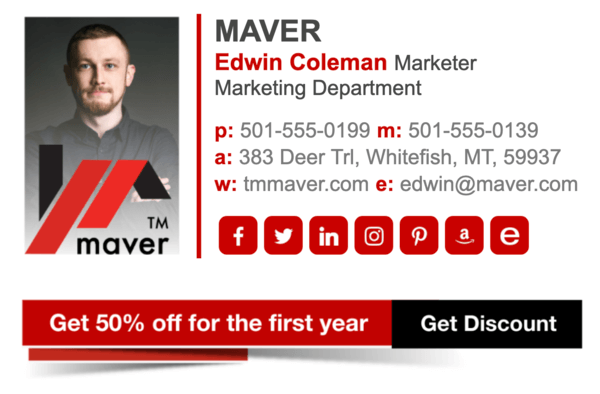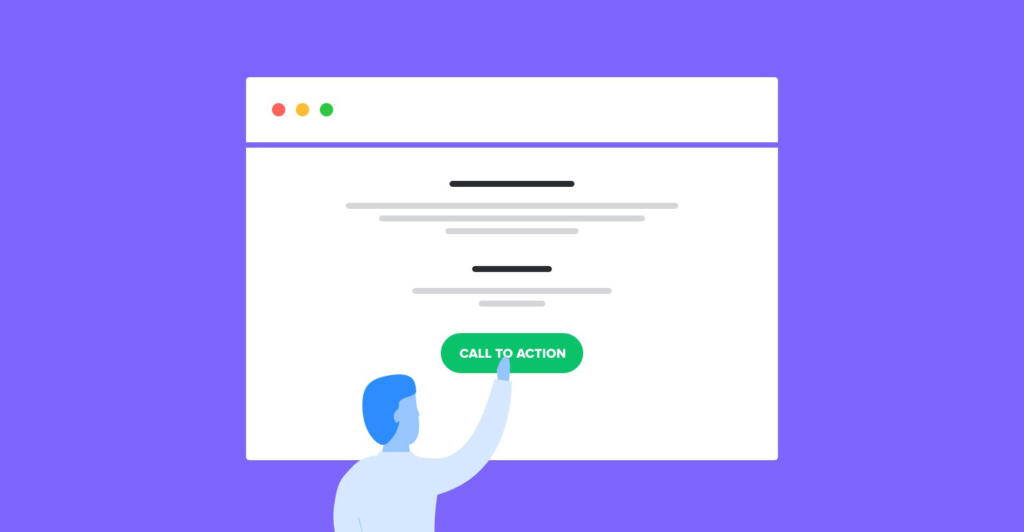
If you have experience writing content for mailings, you surely understand the importance of a call to action (CTA). As a rule, such a mailing has some definite purpose. For example, to bring traffic to the blog, turn subscribers into customers, attract people to a webinar, etc. So, at the end of the email, you usually write something like “Read our recent blog post,” “Shop Now,” “Register for the webinar,” and so on. These are calls to action.

Although we said you put your CTA at the end of the email, it’s not always so. Some marketers prefer putting a CTA in the middle of the email. Others place the same CTA twice or even trice in a single email. Some make it as a button with an email signature software. Others just add an anchor link in the text.
What is the science behind it? Let’s go through the most common CTA placements and figure out which of them works best.
Table of Contents
1. Add anchor Link in the Text
This is the quickest and simplest method to write a CTA. Links are placed in the body of the email. If the formatting of the entire email is simple, it’s quite easy to notice such a CTA. However, some people experiment with the fonts and colors making them too fancy and bright. Sometimes, it becomes hard for the recipient to see the link in the text.
2. Insert a Button
Campaign Monitor tests show that a button is 28% more effective than a link. If you choose the right color and size, it will make your CTA pop, and people will likely click on it.
3. Put CTA on a Picture
According to a Hubspot study, the conversion of images is, on average, two times lower compared to buttons. Plus, there is a risk that images will be disabled in the recipient’s email client. Still, images evoke emotion and thereby induce action. Therefore, pictures in emails can be made clickable.
4. Use an Email Signature Banner
When it comes to business emails, it is critical to remain professional yet provide the recipient with instructions on what to do next. The more clear and straightforward your call to action is, the more likely a person will take the desired action. However, some situations don’t allow adding a CTA in the form of a picture or a button. In this case, you can opt for placing your CTA on a signature banner, like in the image below.

Not only it easily attracts the recipient’s attention, but it also looks more neat and professional.
You can even create email signatures for the entire team and use various banners with different calls to action. For example, a marketing department can encourage people to buy an updated app in their signatures. For tech support, it will be more appropriate to call customers for registering for a webinar/tutorial.
5. Combine Some of the Above
Most users associate a click with a button, but this doesn’t mean that all CTAs should now be in the form of buttons only. Pictures and links can also be utilized when appropriate. CTAs in email signatures are also widely used in email marketing. Combine both in one email.
Now, let’s figure out where it is best to place your call to action and whether it is worth limiting yourself to one button.
Above or Below the Fold Line
Surely many of you heard that it is better to place the button above the fold line (i.e., on the first screen). The logic is obvious. Not everyone gets to the end of an email.
Still, there are situations when the button at the bottom works better. If you are writing about a complex product or service that requires a high level of trust, try placing your call to action at the end of the email.
Right or Left
Many marketers place a CTA button just below the heading in the upper left corner of the screen. And it works because recipients look here first.
You probably also heard about a Gutenberg diagram that advises placing a CTA in the lower right area of the screen.
For mobile versions, it makes sense to test the button located slightly to the right of the center. Most people are right-handed. When they hold the phone in their right hand, it is more convenient to tap the buttons on the right.

One vs. Many
The easiest way to solve the problem of choosing the right place for the button is to put several CTA in one email. If it is a long email, or you know that most recipients will read it on mobile devices, try adding a CTA button for every 2-3 screens, as well as at the beginning and the end of the long email.
Keep in mind that if you use the same button with the same text many times, people could think of you as a pushy seller. That is why it is better to use different CTA formulations. However, it is only necessary to change the text, but not the essence of the CTA. Otherwise, there is a risk of confusing your readers.
Conclusion
A call to action is an essential element of every email. You can use them as links in the text, buttons, and even images. But in some situations, it is extremely important to keep everything professional. For example, a bright CTA in the form of a button or image isn’t appropriate in an email written to a business partner. You might say: “Then I won’t use a CTA at all.” But a good CTA can make your and recipients’ lives easier. If you want people to take action on your emails, do use calls to action.
In the situation described above, it is appropriate to place your CTA in your email signature which can be created with email signature software.
On top of that, having the email signature is progressive and cost-efficient because it allows promoting anything in every email you send, for free.